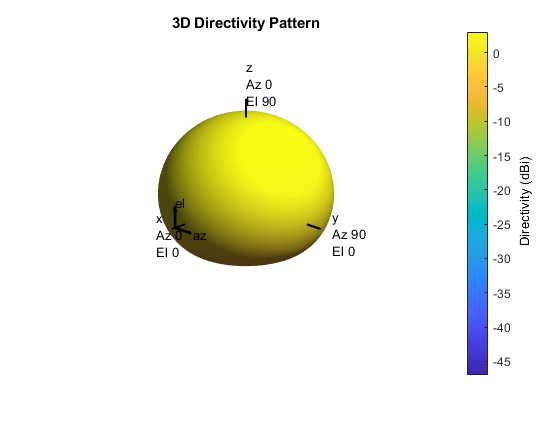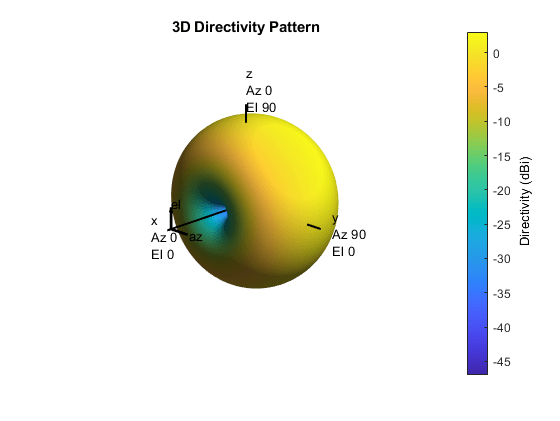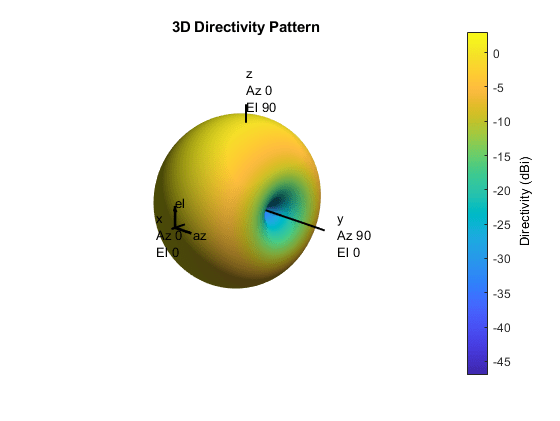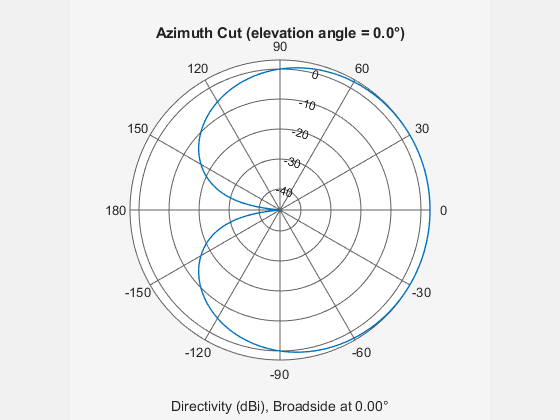phased.CardioidAntennaElement
Description
The CardioidAntennaElement
System object™ models an antenna with a Cardioid Response. Cardioid antennas are
often used in direction finding. The cardioid response can be implemented by placing two
isotropic radiators in an array, a quarter-wavelength apart and 90° out of phase. The default
rotation of the cardioid pattern has a null at 180° azimuth and 0° elevation. The 0° azimuth
and 0° elevation is considered to be the main response axis of the antenna. When placed in a
linear or a rectangular array, the main response axis is aligned with the array normal.
To compute the response of the antenna element for specified directions:
Create the
phased.CardioidAntennaElementobject and set its properties.Call the object with arguments, as if it were a function.
To learn more about how System objects work, see What Are System Objects?
Creation
Description
antenna = phased.CardioidAntennaElementantenna. This object models an antenna element whose
response is a cardioid with a null at 180° azimuth and 0° elevation.
antenna = phased.CardioidAntennaElement(Name=Value)antenna, with each specified
property set to the specified value. You can specify multiple name-value arguments in any
order. For example, FrequencyRange=[1e6 1e9] specifies that the antenna
operates in a frequency range from 1 MHz to 1 GHz.
Properties
Usage
Syntax
Description
Note
The object performs an initialization the first time the object is executed. This
initialization locks nontunable properties
and input specifications, such as dimensions, complexity, and data type of the input data.
If you change a nontunable property or an input specification, the System object issues an error. To change nontunable properties or inputs, you must first
call the release method to unlock the object.
Input Arguments
Output Arguments
Object Functions
To use an object function, specify the
System object as the first input argument. For
example, to release system resources of a System object named obj, use
this syntax:
release(obj)
Examples
More About
Extended Capabilities
Version History
Introduced in R2021b






